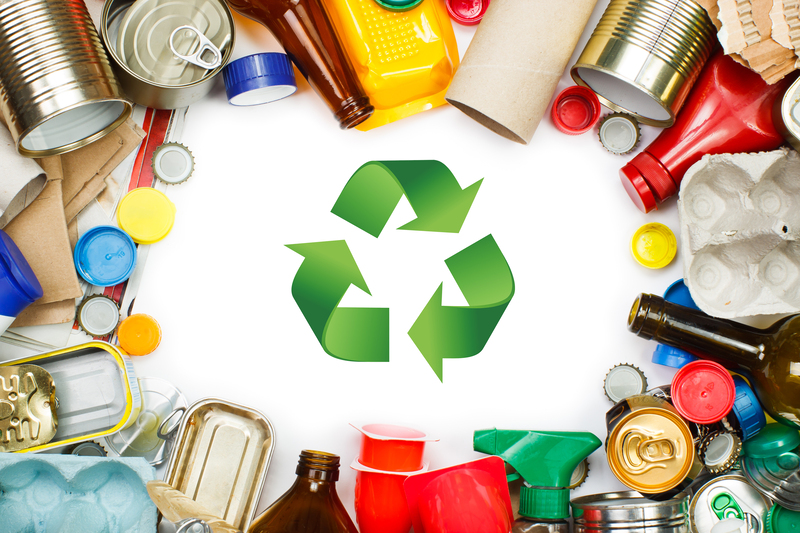Reducing Environmental Impact Through Proper PPE Waste Management
Personal Protective Equipment (PPE) has become an essential safeguard for healthcare workers, industrial laborers, and the general public. However, the surge of PPE usage, especially during global health crises like the COVID-19 pandemic, has led to a substantial increase in PPE waste. This, in turn, poses a significant threat to our environment. In this comprehensive guide, we delve into the importance of reducing environmental impact through effective PPE waste management practices, exploring actionable tips, challenges, innovations, and the roles that individuals and organizations can play in establishing sustainable systems.
The Challenge of PPE Waste and Environmental Degradation
Every year, billions of single-use masks, gloves, face shields, and gowns are discarded. Most of these items are made from non-biodegradable plastics like polypropylene. Improper PPE waste disposal leads to pollution in landfills, rivers, oceans, and even urban environments. The environmental consequences include:
- Prolonged decomposition times — single-use surgical masks can take up to 450 years to degrade.
- Release of microplastics into water bodies, harming marine life and entering the food chain.
- Potential transmission of pathogens if contaminated PPE waste is handled inappropriately.
- Landfill overflow and environmental hazards from incineration emissions.
Proper PPE waste management is no longer optional; it is critical to both public health and the preservation of our planet.

Why Sustainable PPE Waste Management Is Essential
PPE is designed for single or limited use to ensure maximum protection. However, this design has a downside--massive accumulation of waste.
- Environmental Pollution Control: Correct separation and disposal prevent PPE waste from entering natural habitats and ecosystems.
- Public Health Safety: Effective PPE waste management reduces risks of contamination and spread of infectious diseases.
- Resource Efficiency: By adopting sustainable disposal and recycling methods, we conserve resources and minimize landfill burden.
- Compliance with Regulations: Governments worldwide are introducing stringent rules regarding medical and hazardous waste, including PPE.
- Reducing Carbon Footprint: Sustainable processing of PPE reduces greenhouse gas emissions compared to traditional incineration and landfill disposal.
Negative Consequences of Improper PPE Disposal
- Wildlife Hazard: Animals can mistake discarded masks and gloves for food, leading to injuries or death.
- Microplastic Contamination: Breakdown of PPE materials releases tiny plastic particles, causing irreversible ecosystem damage.
- Public Space Litter: Improperly discarded PPE diminishes urban aesthetics and poses health risks to sanitation workers.
Effective Strategies for PPE Waste Management
Reducing environmental impact through PPE waste management requires a multipronged approach that involves prevention, segregation, storage, collection, treatment, and disposal. The following sections highlight best practices and practical steps to ensure responsible PPE waste handling.
1. Prevention and Minimization
- Rational Use of PPE: Train staff and individuals to use PPE only when required, thus reducing overall waste generation.
- Reusable Alternatives: Wherever safe and feasible, opt for reusable or washable PPE such as cloth masks and gowns.
- Bulk Procurement Planning: Better forecasting and inventory management deter over-purchasing and excess disposal.
- Source Reduction: Partner with suppliers who provide PPE with minimal and recyclable packaging.
2. Segregation and Storage
- Color-Coded Bins: Use clearly marked, color-coded bins for PPE disposal (e.g., red bags for contaminated items).
- Separation of Types: Segregate contaminated vs. non-contaminated PPE to facilitate safe handling and possible recycling.
- Safe Storage: Ensure sealed containers in designated, accessible areas to prevent spillage and contact with the general public or wildlife.
3. Collection and Transportation
- Scheduled Pick-Ups: Arrange regular PPE waste collections to avoid overflow and environmental exposure.
- Certified Transport: Employ specialized, certified contractors for hazardous and medical waste.
- Comprehensive Documentation: Maintain accurate records for traceability and regulatory compliance.
4. Treatment and Disposal
- Autoclaving: Steam sterilization can neutralize pathogens, allowing for safer disposal or recycling of PPE waste.
- Incineration (with Emission Controls): If incineration is necessary, do it in licensed plants equipped with advanced emission control technologies to minimize air pollution.
- Disinfection and Mechanical Sorting: Disinfect PPE waste before mechanical sorting and processing for recycling.
- Chemical Treatment: Use environmentally friendly chemicals to disinfect and render waste non-infectious before disposal.
5. Recycling and Recovery
- Upcycling Initiatives: Innovative companies are transforming PPE waste into new products such as construction materials, textiles, and road infrastructure components.
- Material Recovery: Separate and recover recyclable plastics from PPE waste for re-manufacturing.
- Energy Recovery: Certain processes convert PPE waste into fuel through pyrolysis or gasification, offering an alternative to landfilling.
Innovations in PPE Waste Management
Recent advances are paving the way for sustainable PPE waste reduction and environmentally friendly management methods. Some noteworthy innovations include:
- Biodegradable PPE: New materials allow for disposable protective equipment that decomposes quickly without releasing toxic residues.
- Smart Bins: Automated waste bins using AI and sensors to detect, separate, and store PPE waste efficiently.
- Closed-Loop Recycling: Systems that fully recycle used PPE back into new PPE products, promoting a circular economy.
- Plastic-to-Fuel Technology: Conversion of plastic-based PPE waste into usable fuel, reducing dependency on fossil resources.
Roles and Responsibilities: Who Can Make a Difference?
Governments and Regulatory Bodies
- Implementing Clear Policies: Enforce laws on PPE waste segregation, handling, and disposal.
- Supporting R&D: Fund research into sustainable PPE materials and disposal technologies.
- Public Awareness Campaigns: Educate communities on proper PPE disposal practices.
Healthcare Institutions and Industries
- Staff Training: Educate employees about correct PPE usage and disposal.
- Sustainable Procurement: Choose supplies that offer reusable or recyclable PPE options.
- Onsite Waste Processing: Invest in autoclaves or small-scale recycling units.
Individuals
- Following Guidelines: Always dispose of used PPE in marked bins, not on streets or in nature.
- Minimizing Use: Use PPE only when necessary and opt for reusable items where possible.
- Advocacy: Encourage peers, community leaders, and local businesses to adopt sustainable practices.
Case Studies: Success Stories in PPE Waste Reduction
Case 1: Hospital-Led PPE Recycling Initiative
A prominent hospital network in the United States implemented a PPE recycling program that collects, sterilizes, melts, and reforms used masks and gowns into plastic pallets for new products. The result — a 50% reduction in medical waste volume and substantial cost savings.
Case 2: Community-Driven PPE Collection Projects
In parts of Asia, local governments have set up community drop-off points for used PPE. These are regularly collected and sent to specialized treatment centers, helping to dramatically reduce littering and open burning.
Case 3: Biodegradable PPE Adoption
Several European businesses now offer biodegradable alternatives to traditional PPE, helping customers reduce their environmental footprint without sacrificing protection.
Challenges and Opportunities
While the transition to adequate environmentally friendly PPE disposal systems is progressing, several challenges remain:
- Lack of Infrastructure: Many regions lack proper facilities for PPE segregation and treatment.
- Public Awareness: Misinformation or ignorance leads to improper disposal habits.
- Cost Constraints: Recycling and advanced treatment can be more expensive than landfill disposal.
- Safety Concerns: Handling contaminated PPE still poses risks for waste workers and the public.
Opportunities exist in funding innovation, strengthening regulations, conducting awareness campaigns, and fostering collaboration between the public and private sectors.
Tips for Individuals: How to Responsibly Dispose of PPE
- Never throw PPE on the ground or flush down toilets.
- Place used PPE in a sealed bag before disposal. If local systems require, segregate from general waste.
- Wash hands thoroughly after handling used PPE.
- If possible, use certified reusable masks or PPE.
- Stay informed about your community's disposal guidelines.

The Future: Toward a Circular Economy in PPE Waste Management
Tackling PPE pollution is not solely about managing waste—it's about rethinking the entire lifecycle of these protective items. Emerging circular economy models encourage designing out waste, keeping materials in use through recycling/upcycling, and regenerating natural systems.
- Product Design: Encourage manufacturers to develop PPE that is both functional and eco-friendly.
- Incentivizing Returns: Set up systems that reward returning used PPE for safe disposal or recycling.
- End-User Education: Incorporate environmental stewardship as a core part of PPE usage training.
Conclusion
Reducing the environmental impact through proper PPE waste management is an urgent global necessity. Through preventive practices, innovative recycling technologies, responsible consumer behavior, and robust regulatory frameworks, we can ensure that PPE continues to safeguard people without sacrificing environmental sustainability.
As our society confronts new health and industrial challenges, making PPE usage and disposal more sustainable is not just about compliance — it is our shared responsibility toward a healthier planet. By embracing these best practices, policies, and innovations, we move closer to a world where PPE protects both people and the environment--for generations to come.